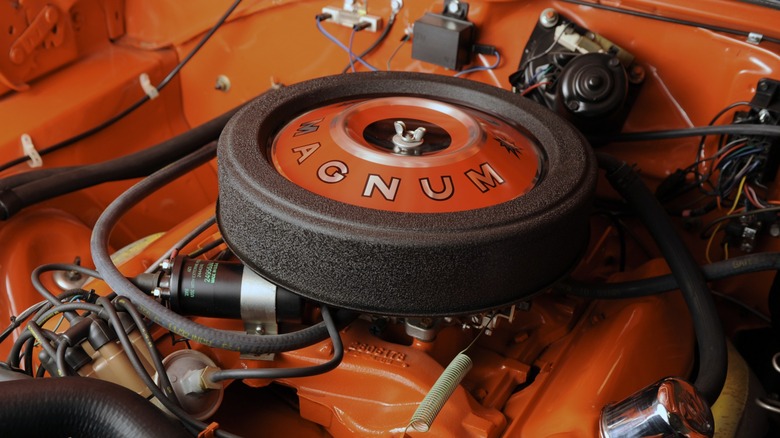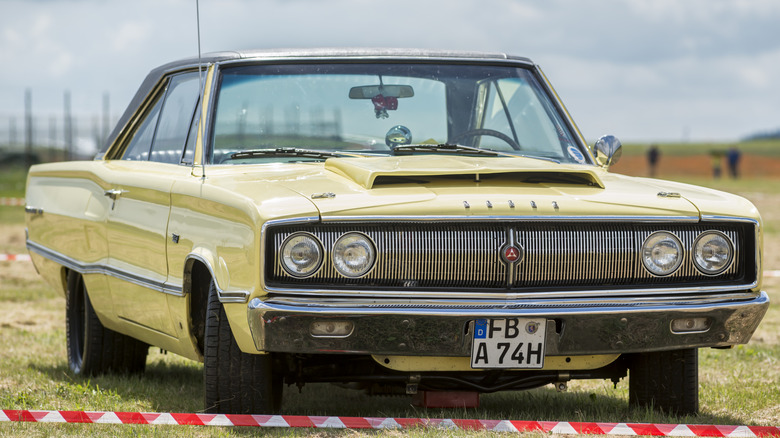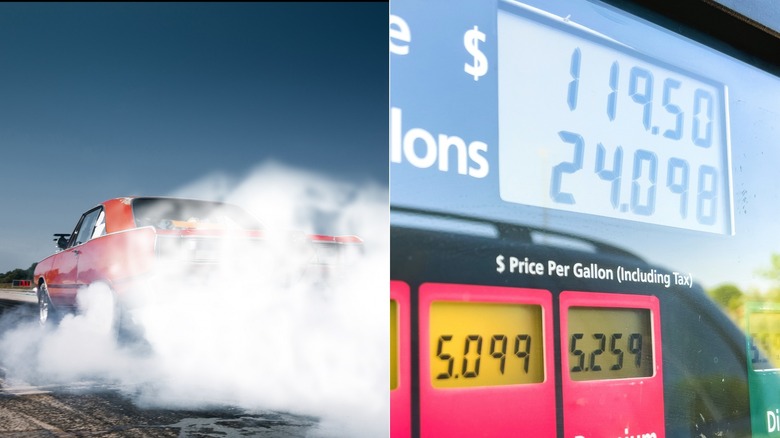The Best And Worst Years For Chrysler's Mopar 440ci V8 Engine
The Mopar 440-cubic-inch V8 belongs to Chrysler's RB engine line with roots traced back to the original 383-cubic-inch big block, which came out in 1959. However, the RB lineage traces back to the previous year, as its foundation is the B-coded big block. While B and RB Mopar engine blocks allow similarly massive piston bore diameters up to 4.34 inches (and beyond for rebuilds), B engines had a relatively short stroke.
The short 3.375-inch piston stroke limited the B's displacement to 400 cubic inches even with its massive 4.34-inch diameter cylinder bore. Increasing the stroke required raising the B engine's deck height, giving the RB (raised B) its name. The taller block allowed engine designers to increase the stroke by 3/8 of an inch to 3.75 inches. The largest of the RB engines, the 440 big block V8 features 4.32-inch cylinder bores. That large bore, combined with its 3.75-inch stroke, results in an actual displacement of 439.72 inches.
The glory years of the 440ci B8 big block engine
Chrysler produced 440-cubic-inch RB engines from 1966 through 1978, with horsepower advancements coming fast in the early years. Prior to 1972, the 440 RB featured cast-iron engine blocks, wedge-shaped heads, and forged steel crankshafts. Chrysler designed these engines for durability and fitted them with quality components. The automotive artisans of the day built these engines to last.
Chrysler, Dodge, and Plymouth used the early 350-brake-horsepower 440 engines, adorned with a four-barrel carburetor, in various commuter cars and trucks. The muscle-car era ushered in the 375-bhp 440 Super Commando variant topped with a four-barrel carburetor, hotter cam, and dual exhaust in 1967 for use over the next few years in such iconic cars as the Charger, Challenger, GTX, Cuda, and Road Runner Superbird. In 1969, following a moment of brilliance and excess, Chrysler engineers gained another 15 horsepower by replacing the four-barrel carburetor with a series of three two-barrel carburetors, commonly called the Six Pack.
The end of an era
Problems with any Chrysler 440 are primarily relegated to external causes, vacuum line leaks, poorly adjusted carburetors, etc. However, starting in 1972, some things added to the big block Mopar's untimely demise in 1978. The nails in its proverbial coffin included governmental regulations and consumer perception.
That's not to say that Chrysler didn't change the 440 starting in 1972 and the years following. Governmental regulations stemming from the Clean Air Act of 1970 and the shift toward low-lead gasoline led to lower engine compression ratios. With the 440 no longer pushing its limits by making massive horsepower, Chrysler began installing less advanced internals, such as cast iron crankshafts, instead of forged steel.
The once powerful 440 indeed suffered decreases in horsepower with nearly every iteration from 1972 to 1978 in an effort to increase its efficiency. However, it wasn't as drastic as it appeared on paper. Before 1972, the method for calculating brake horsepower allowed testing engines without accessories, water pumps, and exhaust systems. The switch to net horsepower in 1972 required engine testing as if it were in a vehicle, including smog controls. The resulting loss in advertised horsepower, both real and perceived, caused consumers to reconsider their purchase options.


